Discover the beauty and low-maintenance appeal of Cactus Varieties with this comprehensive guide to 31 popular types you can easily grow indoors or in your backyard.
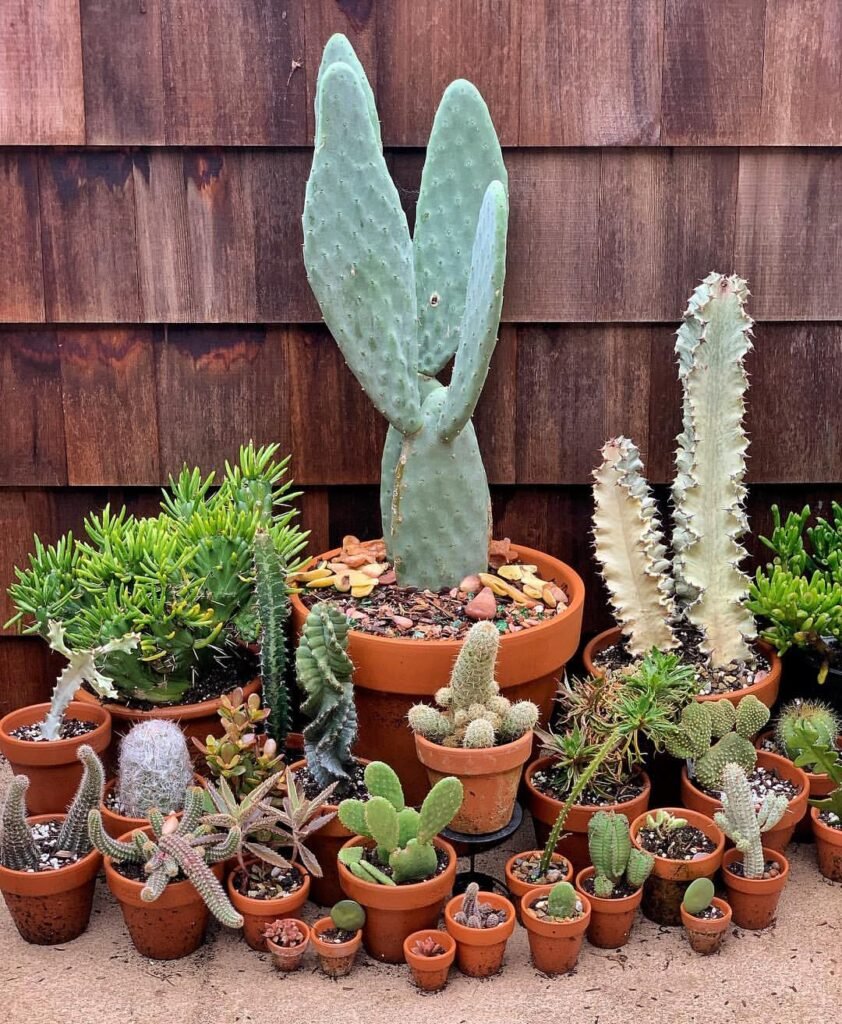
Cacti are fascinating plants that have captured the hearts of plant enthusiasts worldwide. With their unique shapes, striking spines, and ability to thrive in dry environments, these desert dwellers make excellent additions to any indoor or outdoor living space. Whether you’re a seasoned gardener or a beginner, there’s a cactus varieties that will suit your needs and preferences. In this article, we’ll explore 31 of the best and most popular types of cacti you can grow at home, providing you with all the essential information to help you choose the perfect specimens for your collection.
1. Prickly Pear Cactus
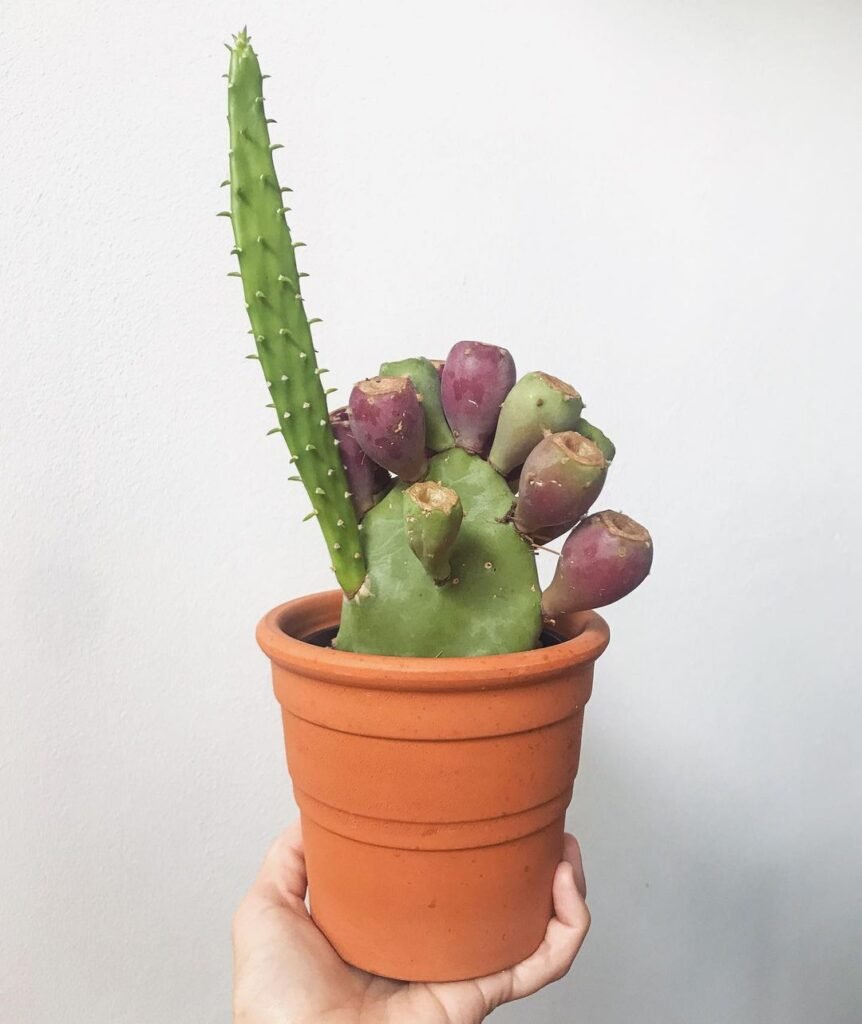
Botanical Name : Opuntia
The prickly pear cactus is a classic choice for any cactus garden. These paddle-like cacti come in various shapes and sizes, ranging from the compact Opuntia microdasys to the towering Opuntia ficus-indica. Their vibrant yellow or red flowers add a pop of color to your space.
2. Barrel Cactus
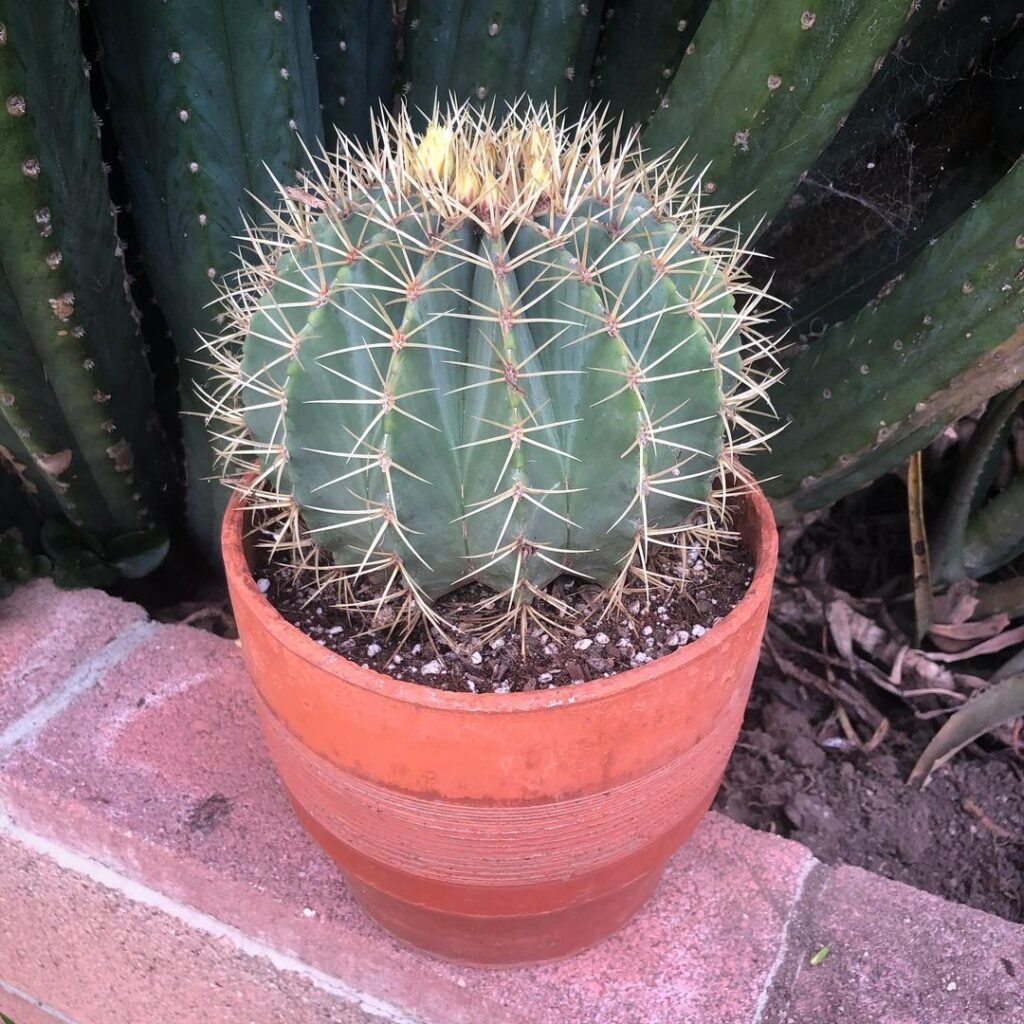
Botanical Name : Ferocactus
Barrel cacti are aptly named for their round, barrel-like shapes. The golden barrel cactus (Echinocactus grusonii) is a popular variety that can grow up to three feet tall, with yellow spines and large, vibrant yellow flowers.
3. Saguaro Cactus
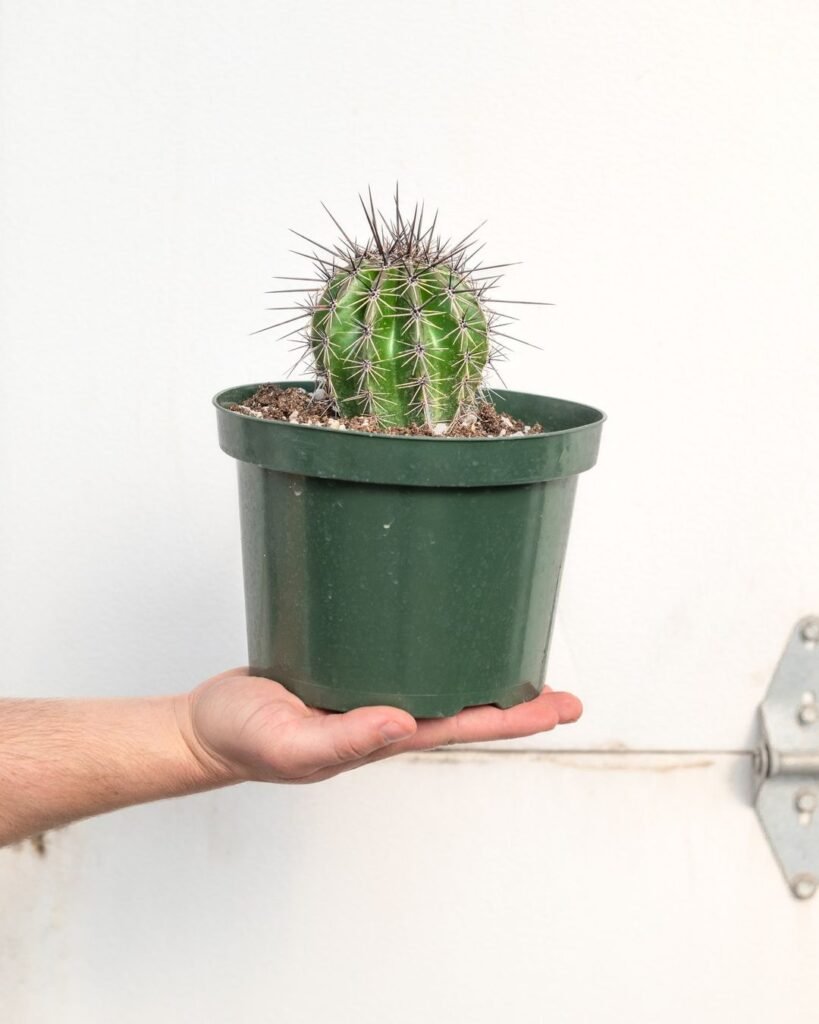
Botanical Name : Carnegiea gigantea
The iconic saguaro cactus is a symbol of the American Southwest. While it can grow up to 60 feet tall in the wild, dwarf varieties like the Superbena cactus make excellent potted plants for indoor or outdoor spaces.
4. Old Lady Cactus
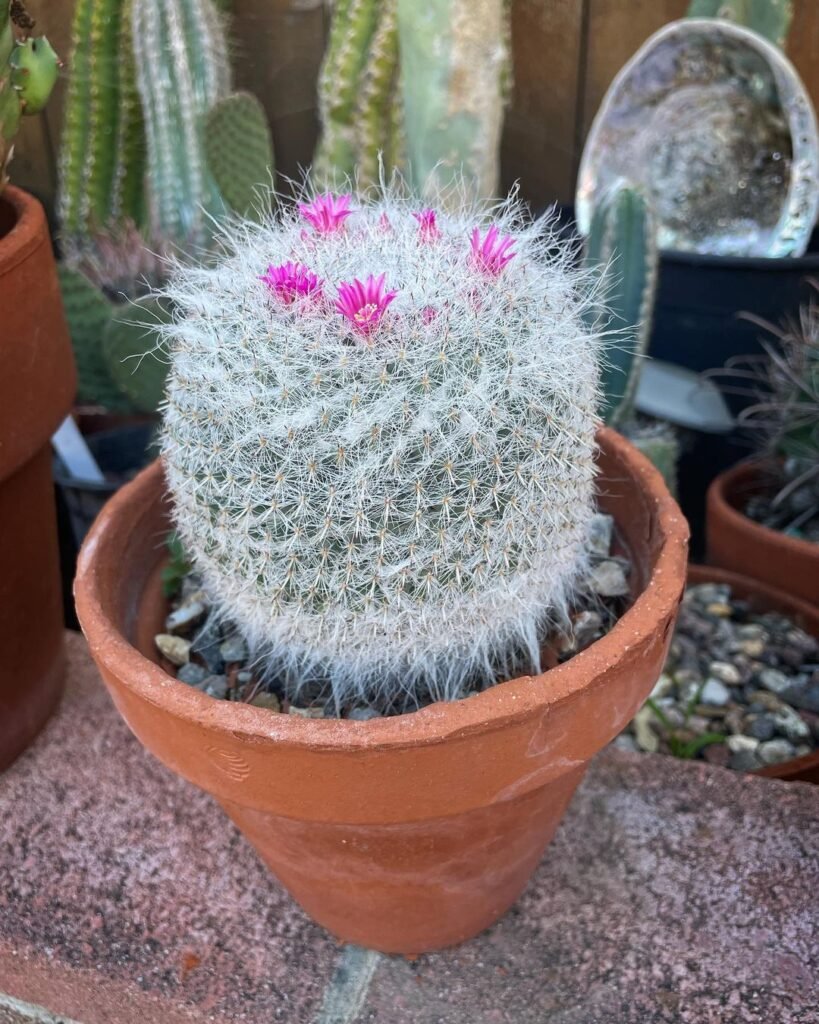
Botanical Name : Mammillaria hahniana
The old lady cactus is a charming and easy-to-care-for variety. Its clusters of white, wooly spines give it a distinctive, fuzzy appearance, making it a unique addition to any cactus collection.
5. Bunny Ear Cactus
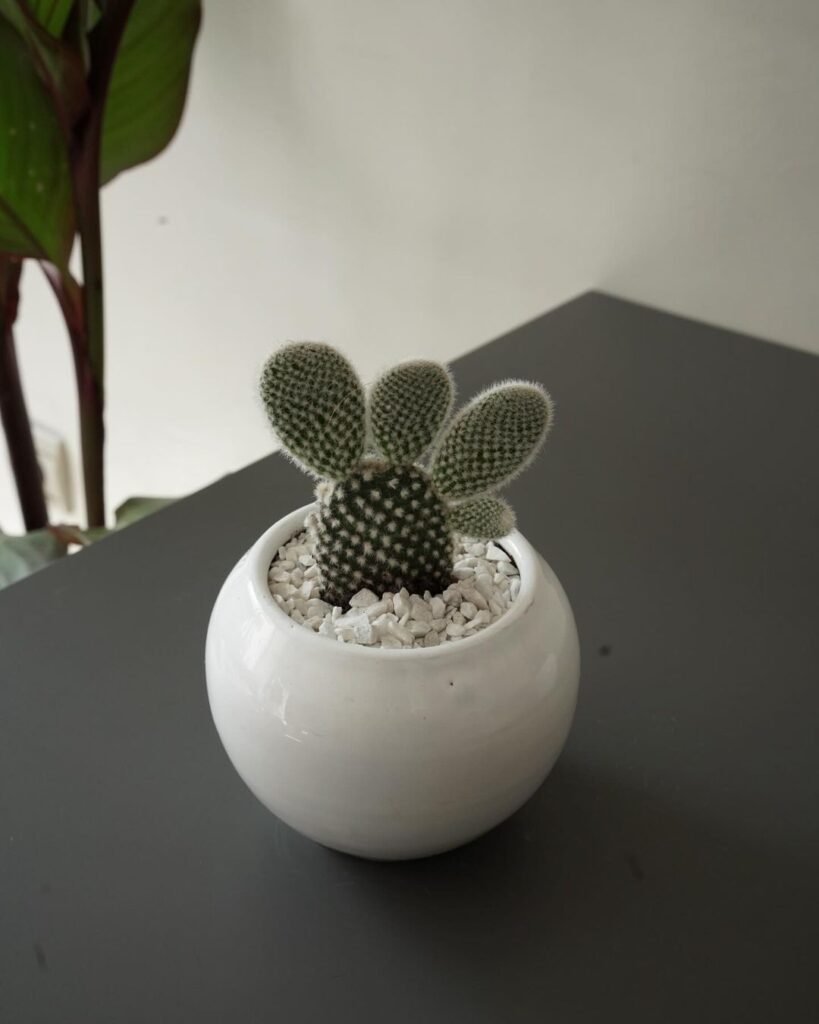
Botanical Name : Opuntia microdasys
The bunny ear cactus, also known as the polka-dot cactus, is a delightful and low-maintenance option. Its flat, pad-like stems resemble bunny ears, and its vibrant yellow or red flowers add a cheerful touch to any space.
6. Pincushion Cactus
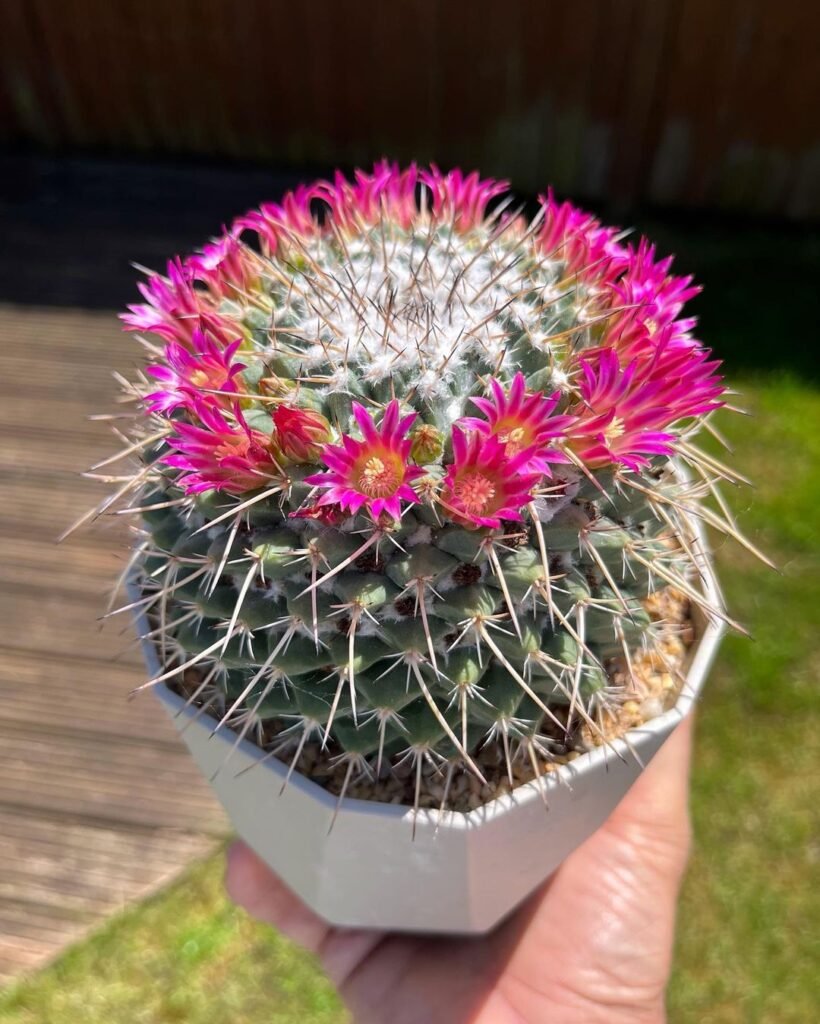
Botanical Name : Mammillaria
The pincushion cactus is a delightful and low-growing variety that gets its name from its densely packed, spiny stems resembling a pincushion. These cacti come in various shapes and colors, making them a unique addition to any collection.
7. Hedgehog Cactus
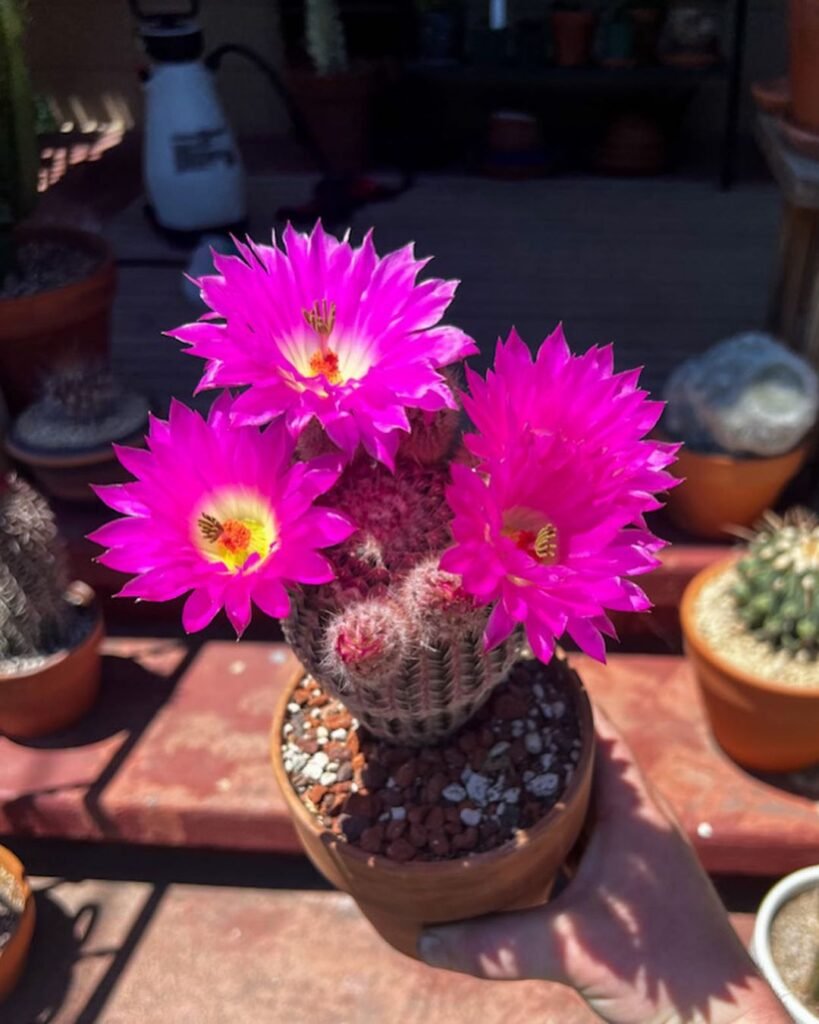
Botanical Name : Echinocereus
As their name suggests, hedgehog cacti have a spiky, spherical shape that resembles a hedgehog. They are low-maintenance and relatively easy to care for, making them an excellent choice for beginners.
8. Golden Barrel Cactus
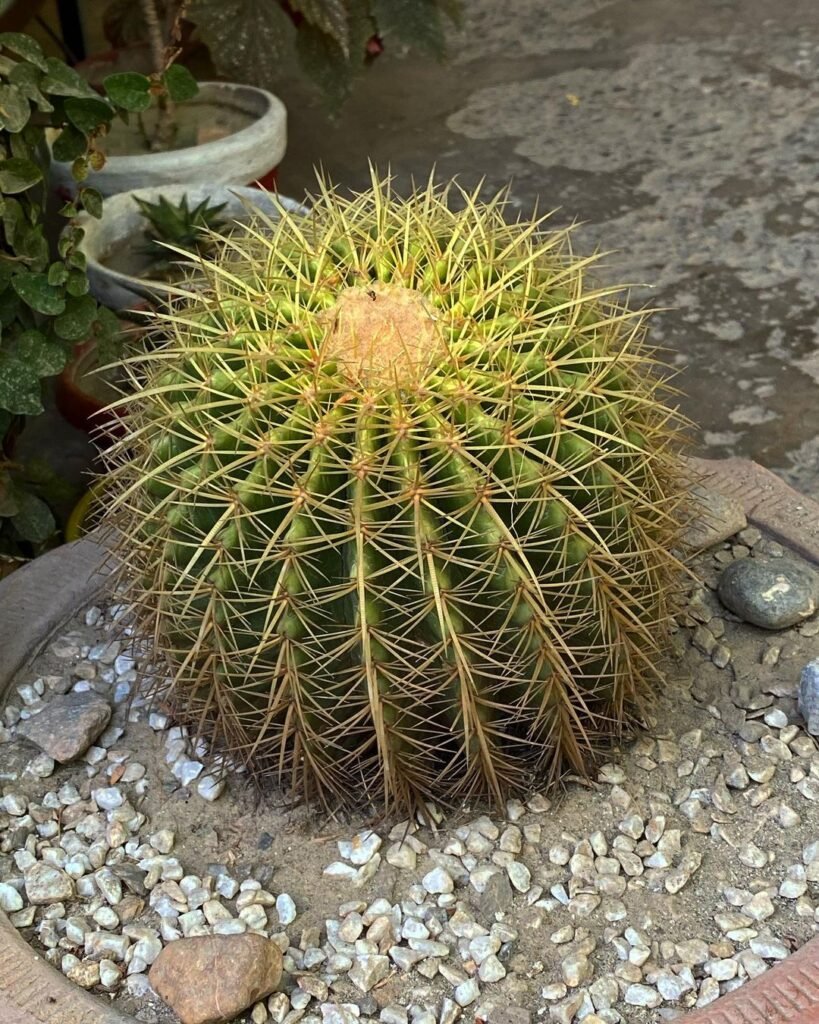
Botanical Name : Echinocactus grusonii
The golden barrel cactus is a stunning specimen with its barrel-like shape and vibrant golden spines. It can grow up to three feet tall and produces large, bright yellow flowers when mature.
9. Moon Cactus

Botanical Name : Gymnocalycium mihanovichii
The moon cactus is a unique and eye-catching variety that features a brightly colored “moon” grafted onto a green cactus base. These fascinating cacti come in various vibrant hues, including red, yellow, and orange.
10. Fishhook Cactus
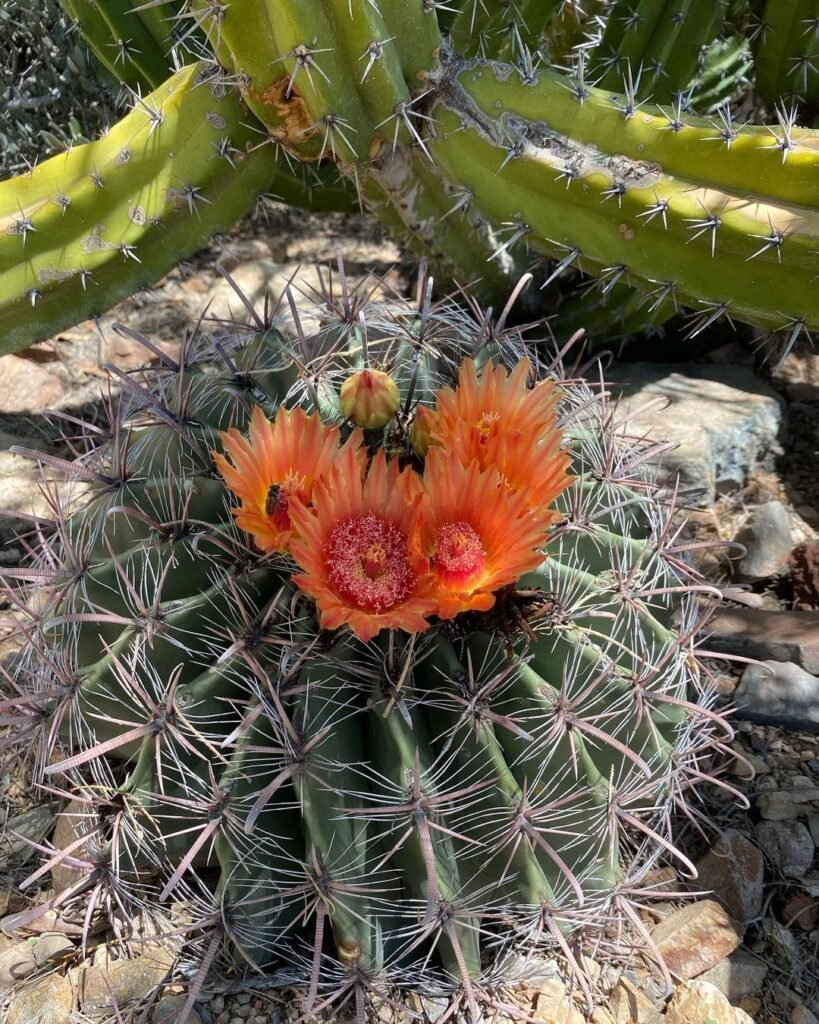
Botanical Name : Ferocactus wislizeni
The fishhook cactus is named for its distinctive curved spines that resemble fishhooks. This hardy cactus is native to the Southwestern United States and can grow up to several feet tall.
11. Christmas Cactus
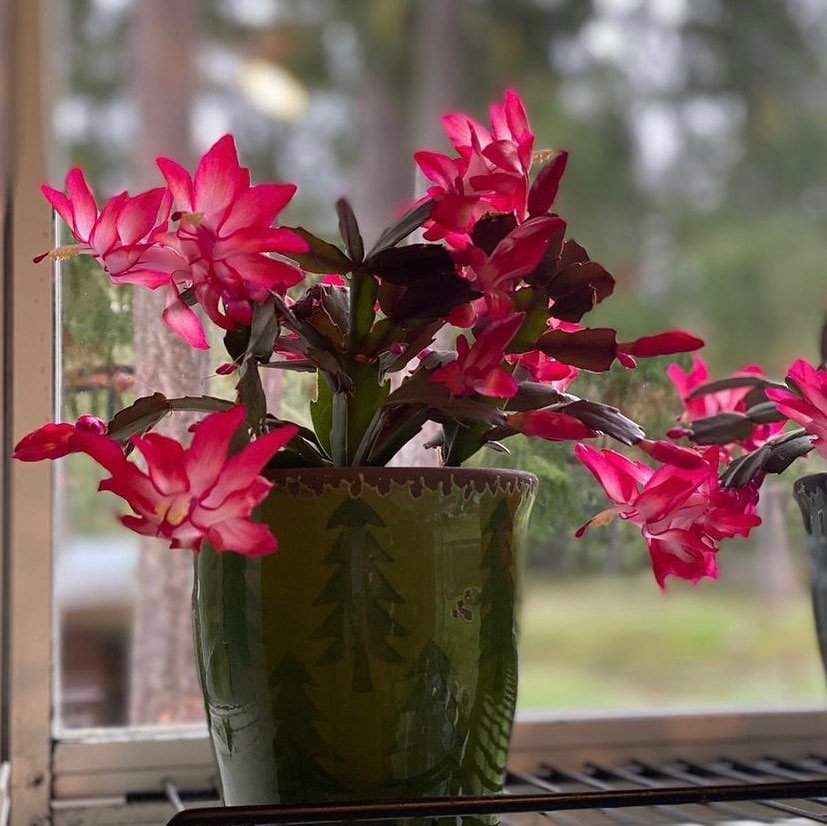
Botanical Name : Schlumbergera
The Christmas cactus is a beloved and easy-to-grow variety that blooms with vibrant red, pink, or white flowers around the holiday season. With its trailing stems, it makes a beautiful hanging or tabletop plant.
12. Lemon Ball Cactus

Botanical Name : Parodia leninghausii
The lemon ball cactus is a small, globular cactus that resembles a lemon. Its bright yellow spines and compact size make it an attractive choice for indoor or outdoor displays.
13. Eve’s Pin Cactus
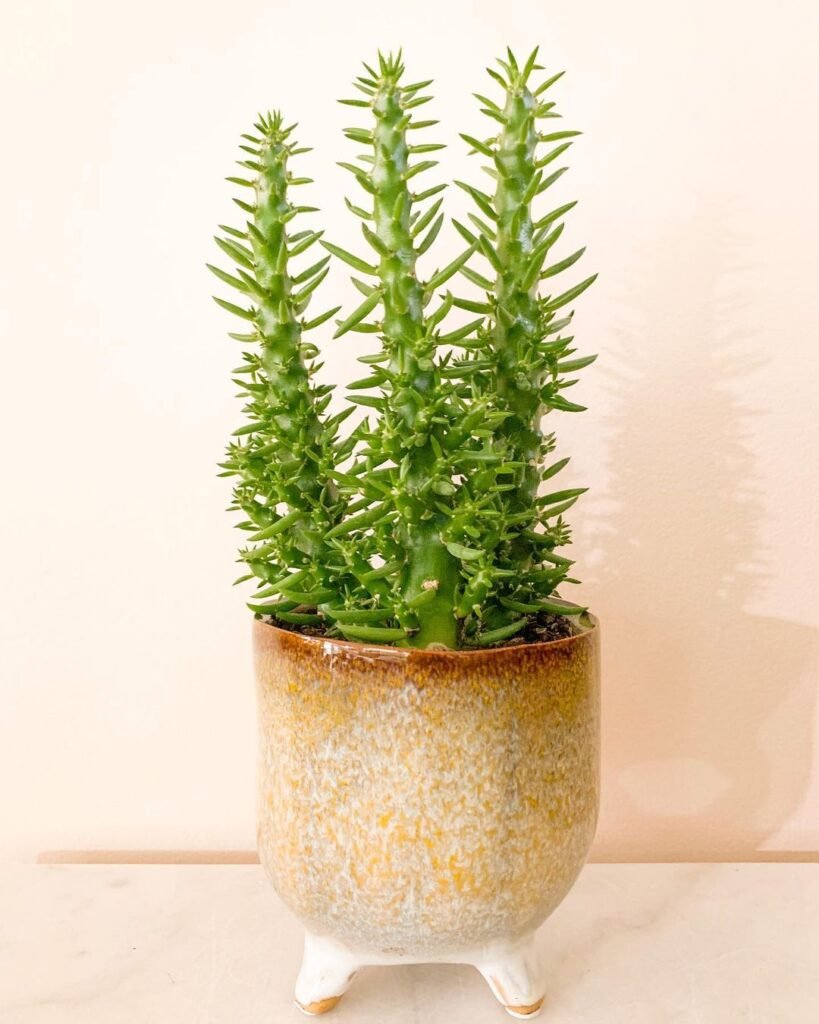
Botanical Name : Austrocylindropuntia subulata
The Eve’s pin cactus is a unique and slender variety with long, cylindrical stems covered in dense, hair-like spines. It can grow up to six feet tall and produces beautiful red or yellow flowers.
14. Claret Cup Cactus
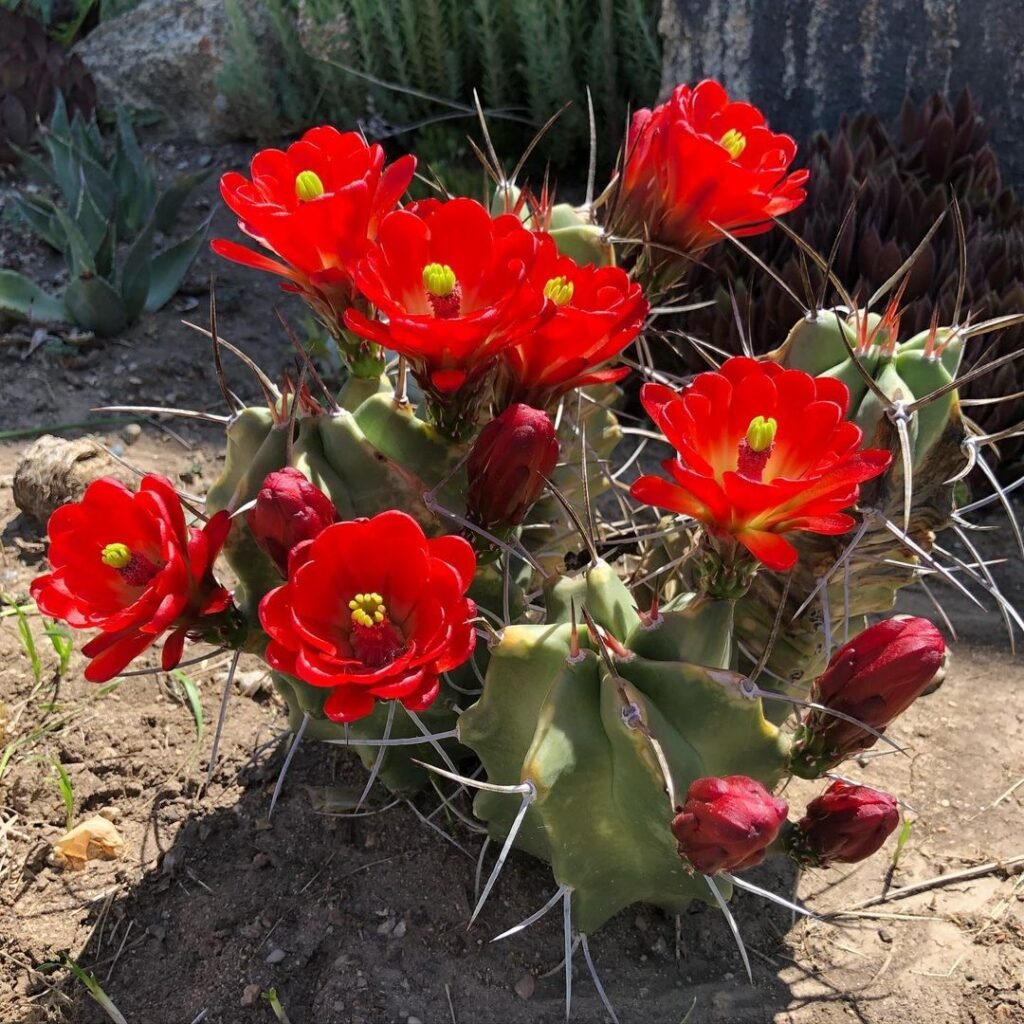
Botanical Name : Echinocereus triglochidiatus
The claret cup cactus is a vibrant and eye-catching variety with stunning red or orange flowers that resemble cups or goblets. It’s a relatively easy-to-grow cactus that adds a pop of color to any space.
15. Totem Pole Cactus
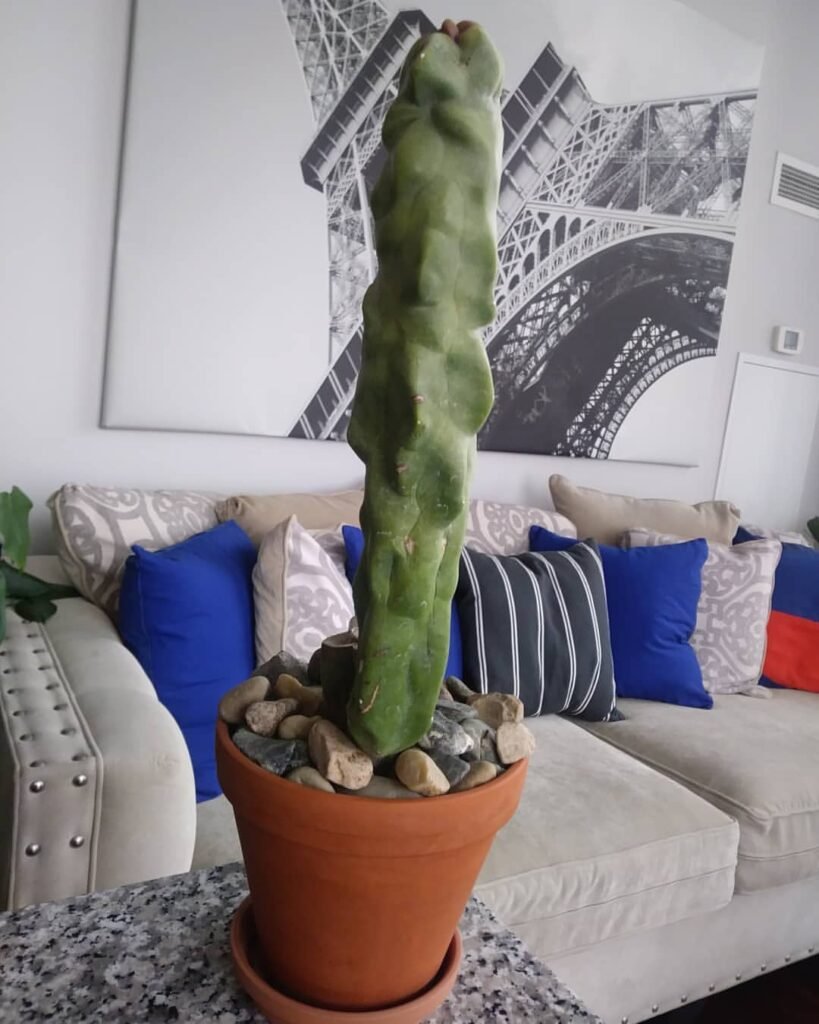
Botanical Name : Lophocereus schottii
The totem pole cactus is a tall and columnar variety that can grow up to 20 feet high in the wild. Its unique shape and clusters of yellow or pink flowers make it a striking addition to any cactus garden.
16. Bishop’s Cap Cactus

Botanical Name : Astrophytum myriostigma
The bishop’s cap cactus is a unique and instantly recognizable variety with its distinctive star-shaped growth pattern and ribbed, ridged body. It’s a slow-growing cactus that can reach up to 12 inches in height and diameter.
17. Star Cactus
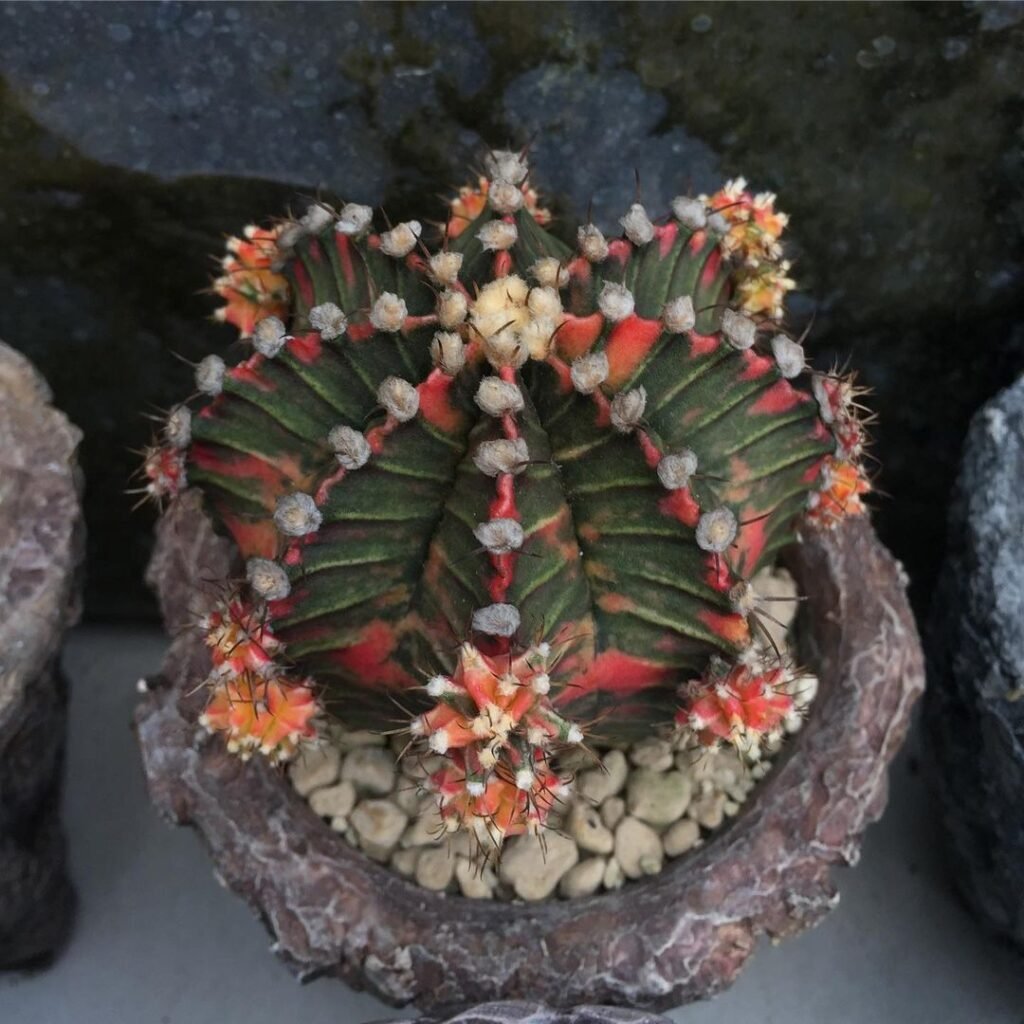
Botanical Name : Gymnocalycium mihanovichii
The star cactus is a small, globular cactus that gets its name from the star-like pattern formed by its dense spines. These cacti come in various colors, including green, yellow, and brown, making them an attractive addition to any collection.
18. Chin Cactus

Botanical Name : Gymnocalycium
Search Results
The chin cactus is a charming and distinctive variety with a protruding “chin” or tubercle at the top of its globular body. It’s a slow-growing cactus that can reach up to 8 inches in diameter and produces beautiful white or pink flowers.
19. Old Man Cactus
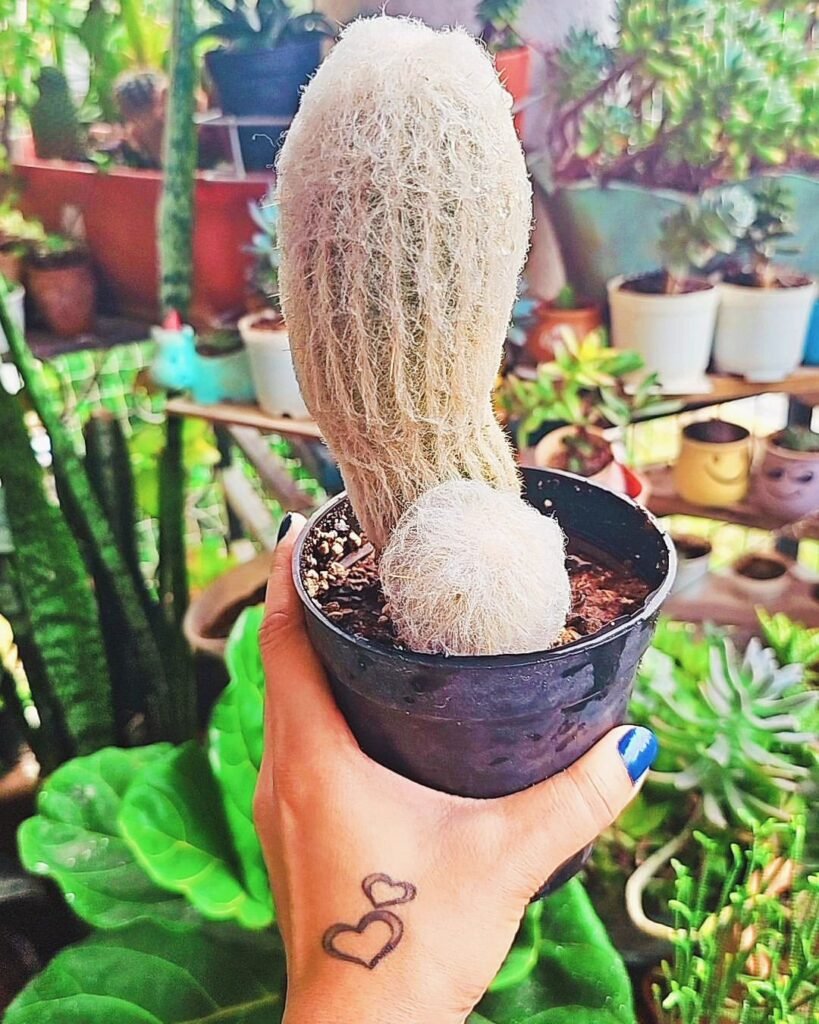
Botanical Name : Cephalocereus senilis
The old man cactus, also known as the woolly cactus, is a unique and whimsical variety with long, white, hair-like spines that give it a fuzzy, “old man” appearance. These cacti can grow up to 15 feet tall and produce large, fragrant white flowers.
20. Peruvian Apple Cactus
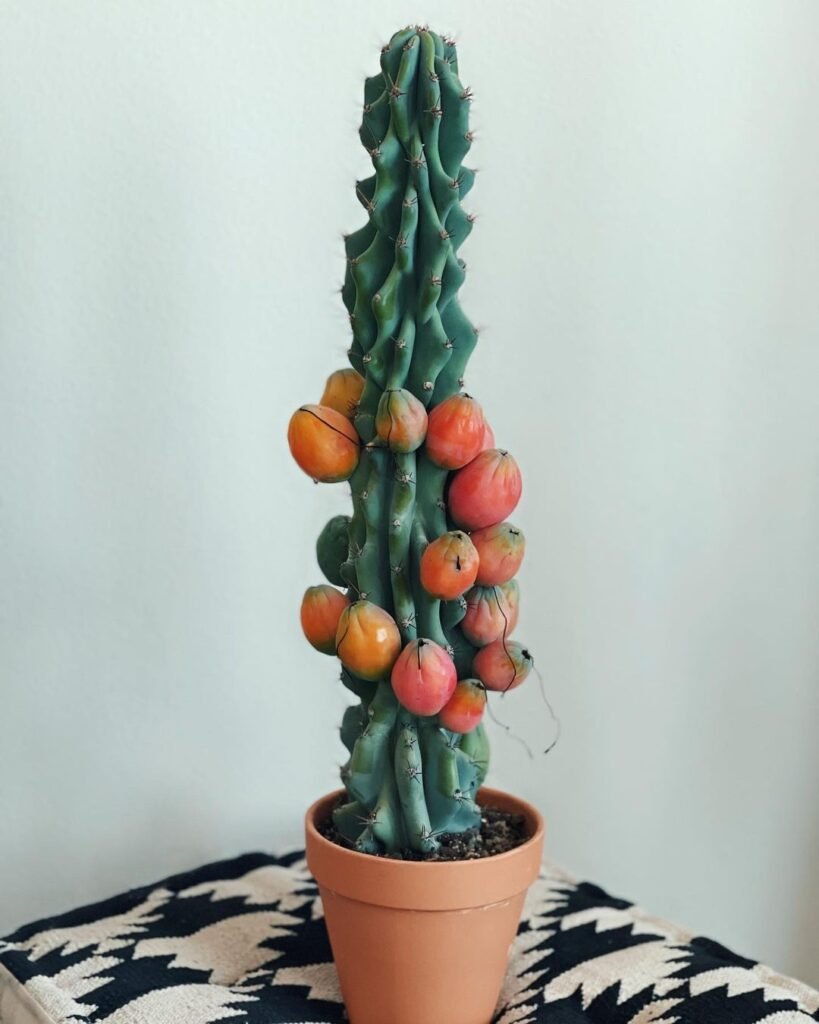
Botanical Name : Cereus repandus
The Peruvian apple cactus is a columnar variety that can grow up to 20 feet tall in the wild. It’s named for its edible, apple-like fruits that are commonly used in traditional Peruvian cuisine.
21. Sea Urchin Cactus

Botanical Name : Echinopsis
The sea urchin cactus is a small, spherical cactus with densely packed spines that resemble a sea urchin. These cacti come in various colors, including green, yellow, and white, and are relatively easy to care for.
22. Organ Pipe Cactus
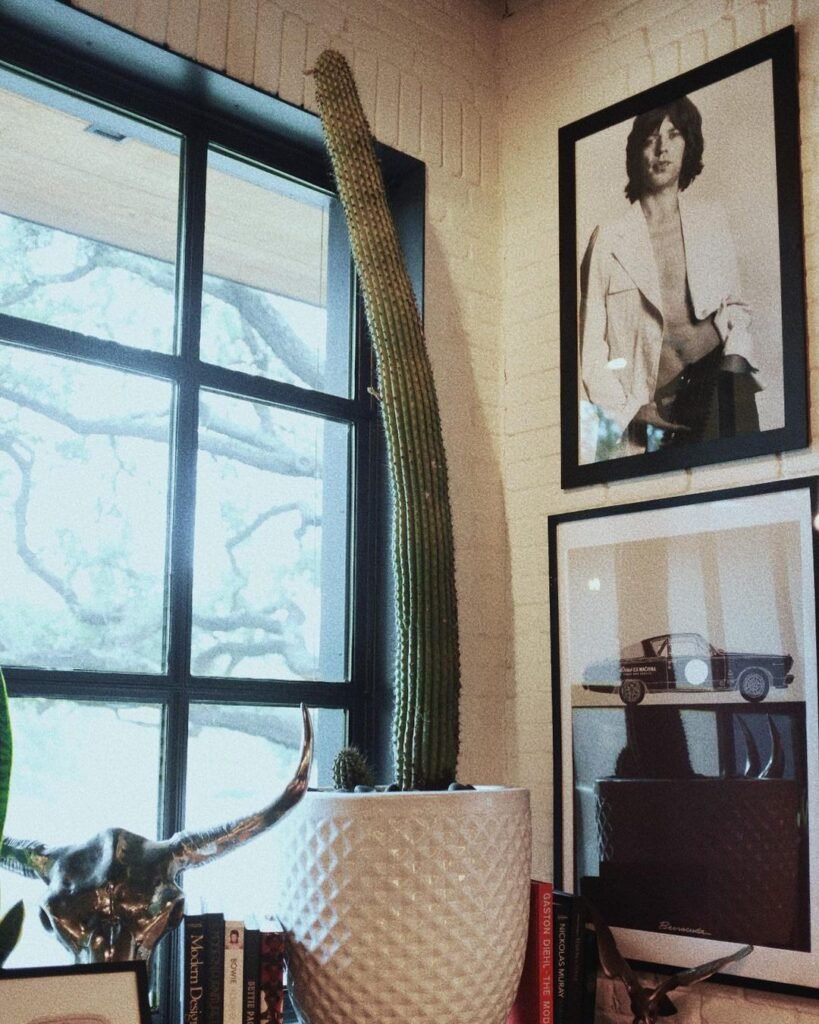
Botanical Name : Stenocereus thurberi
The organ pipe cactus is a tall, columnar variety that gets its name from its clusters of stems that resemble organ pipes. These cacti can grow up to 20 feet tall in the wild and are native to the Sonoran Desert of the Southwestern United States and Mexico.
23. Fairy Castle Cactus

Botanical Name : Acanthocereus tetragonus
The fairy castle cactus is a unique and whimsical variety with a distinct, branching growth pattern that resembles miniature towers or castles. These cacti can grow up to 6 feet tall and produce large, fragrant white flowers.
24. Powder Puff Cactus
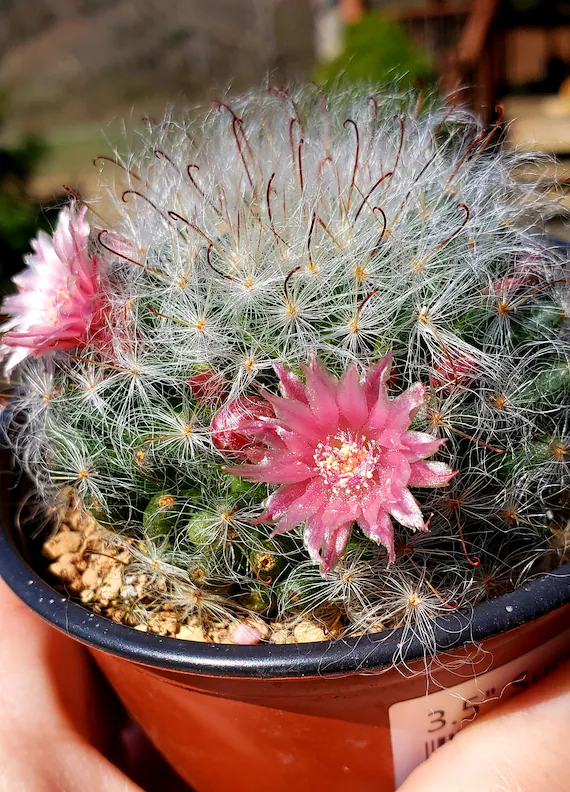
Botanical Name : Mammillaria bocasana
The powder puff cactus is a small, globular cactus with dense, soft white spines that resemble a powder puff. These cacti are relatively easy to care for and make excellent additions to indoor or outdoor displays.
25. Blue Myrtle Cactus
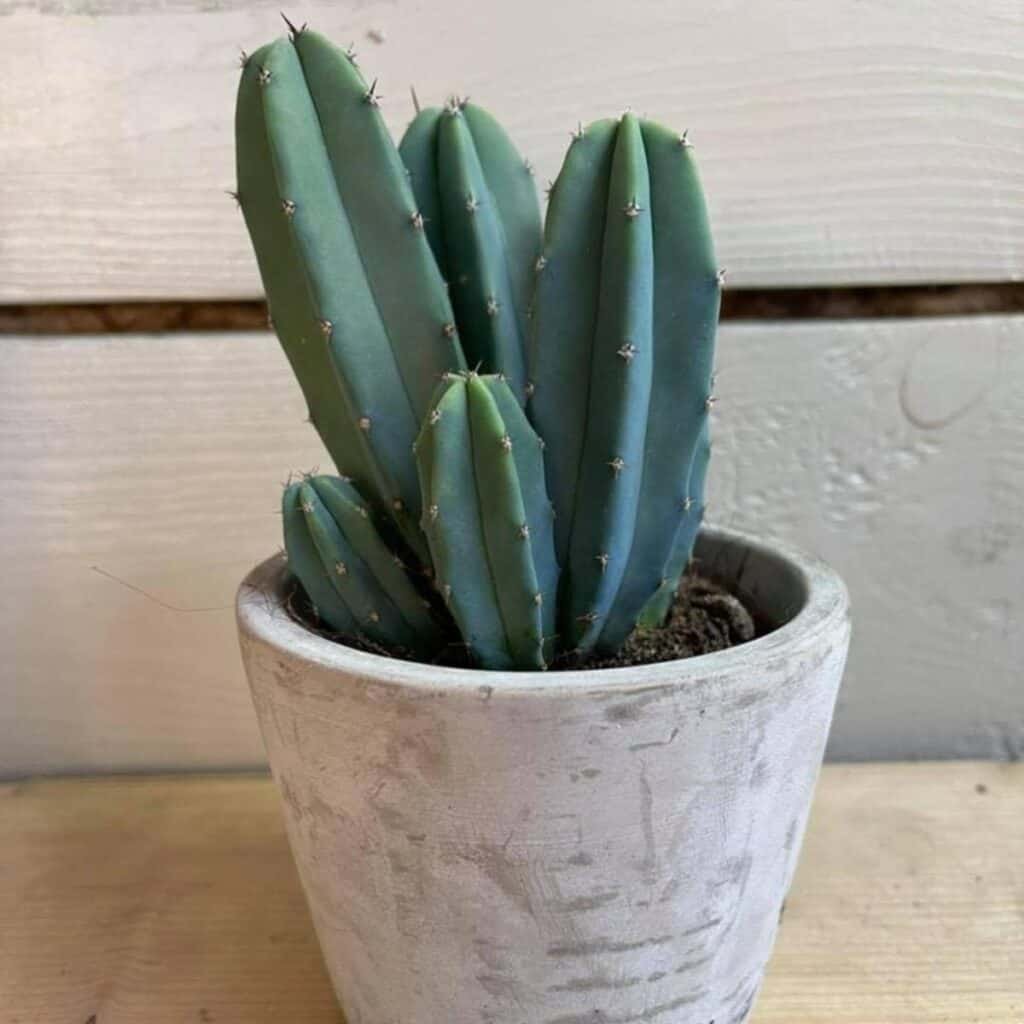
Botanical Name : Myrtillocactus geometrizans
The blue myrtle cactus is a unique and eye-catching variety with a bluish-green color and distinctive geometric patterns along its stems. These cacti can grow up to 10 feet tall and produce small, white flowers.
26. Turk’s Cap Cactus
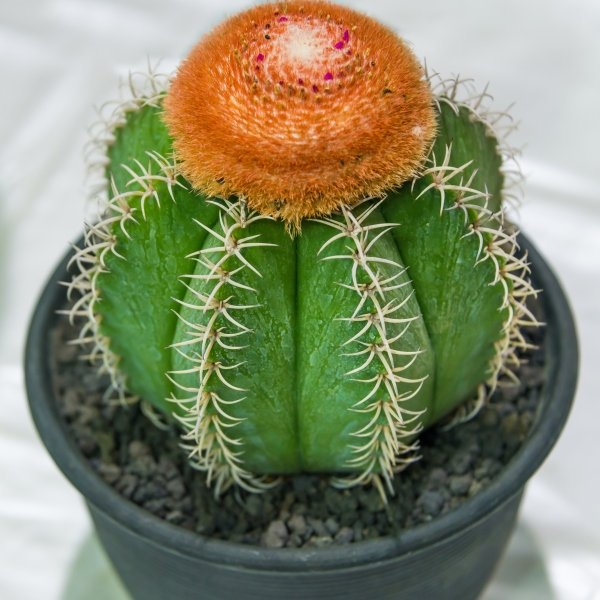
Botanical Name : Melocactus
The Turk’s Cap cactus is a striking variety with a distinctive red “cap” or cephalium on top of its cylindrical stem. These cacti are native to the Caribbean and can grow up to 3 feet tall, producing vibrant red or pink flowers.
27. Cholla Cactus
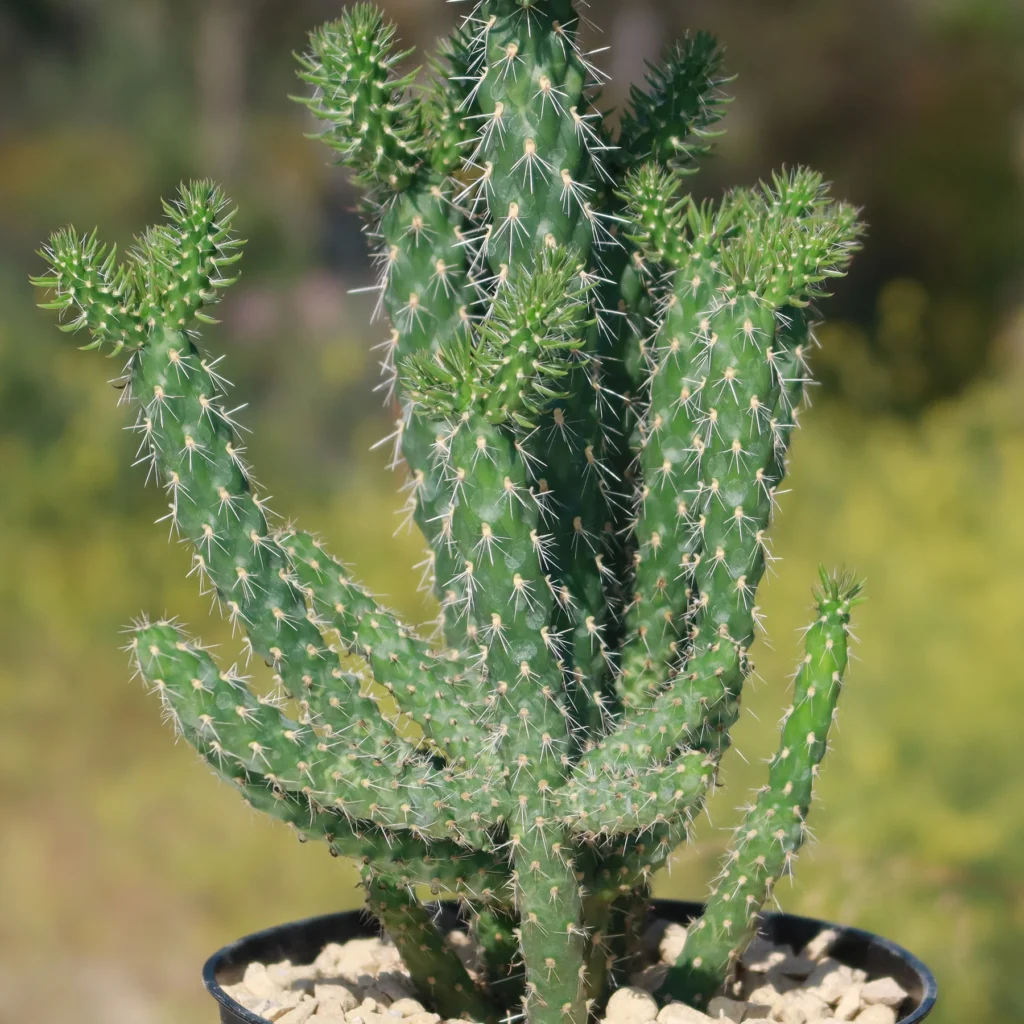
Botanical Name : Cylindropuntia
The cholla cactus is a widespread variety in the Southwestern United States, known for its dense clusters of cylindrical stems covered in sharp spines. These cacti can grow up to 6 feet tall and produce yellow or greenish-yellow flowers.
28. Beavertail Cactus
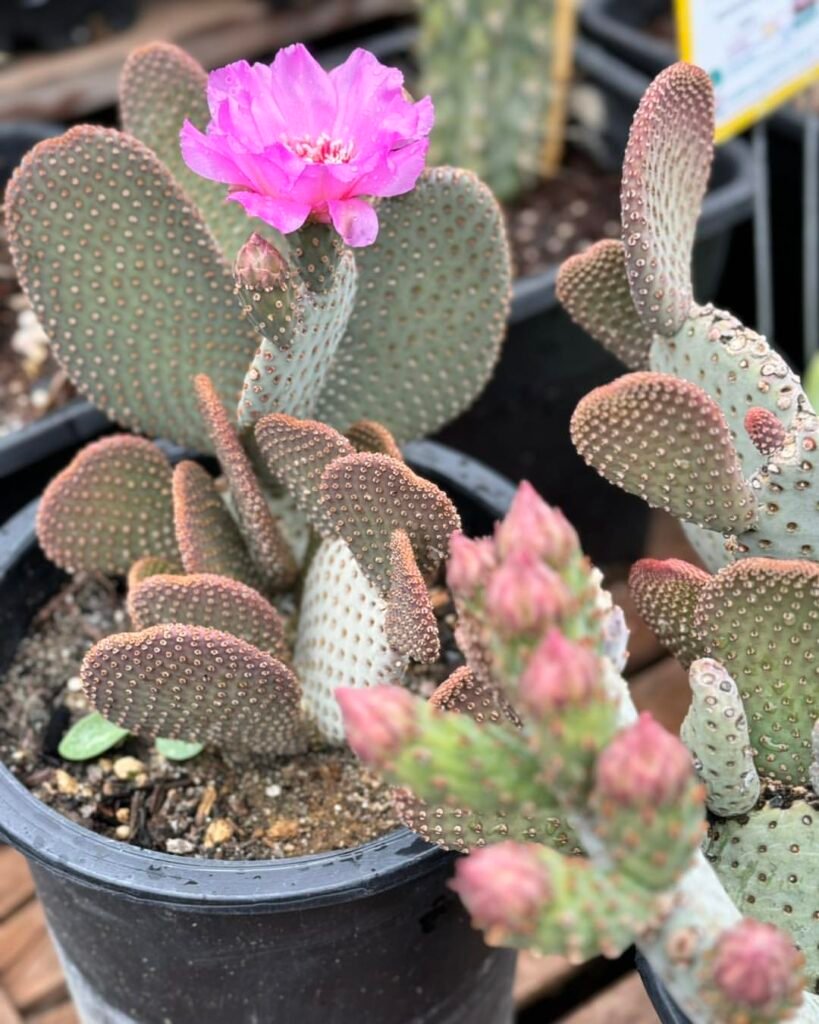
Botanical Name : Opuntia basilaris
The beavertail cactus is a low-growing, pad-like cactus that gets its name from its paddle-shaped stems that resemble a beaver’s tail. These cacti are native to the Southwestern United States and can spread up to 3 feet wide, producing magenta or pink flowers.
29. Torch Cactus
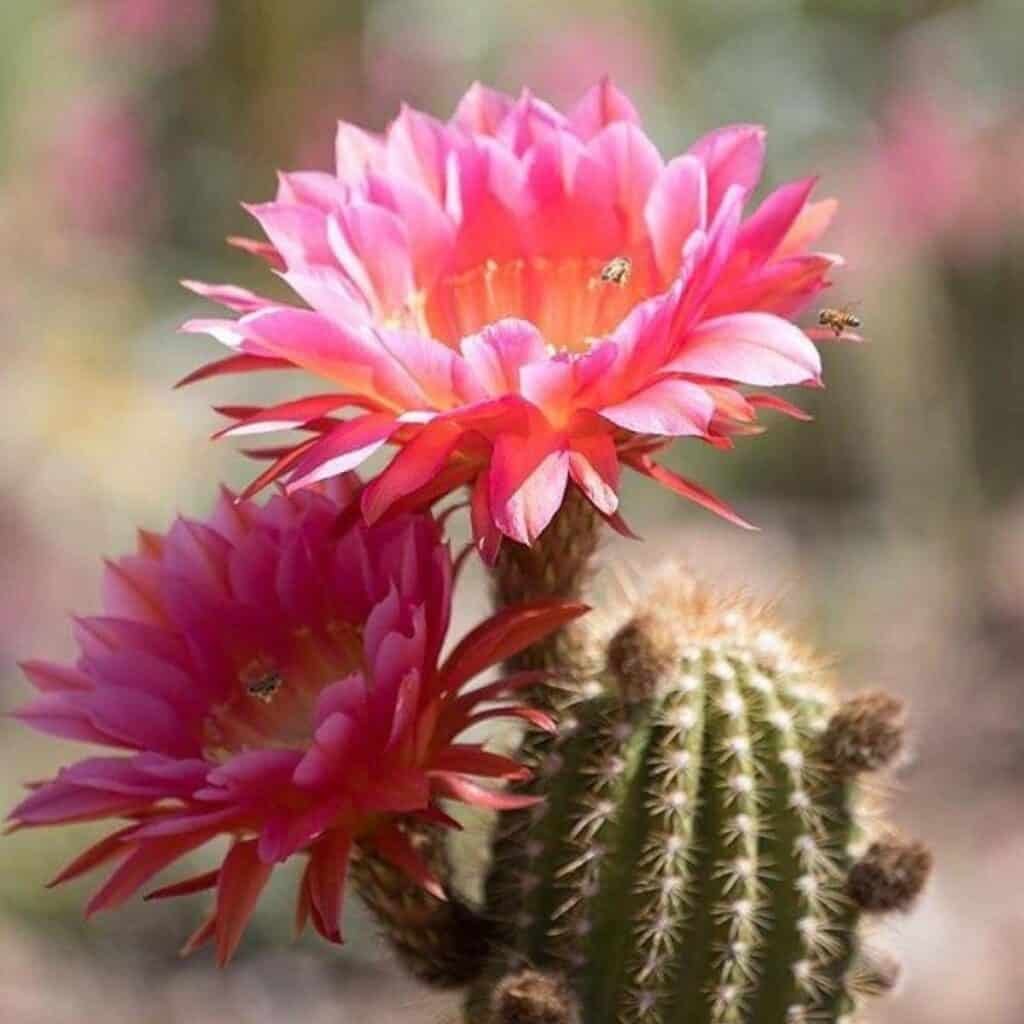
Botanical Name : Trichocereus
The torch cactus is a tall, columnar variety that can grow up to 20 feet tall in the wild. These cacti are native to South America and are known for their striking white or yellow flowers that bloom at night.
30. Peanut Cactus
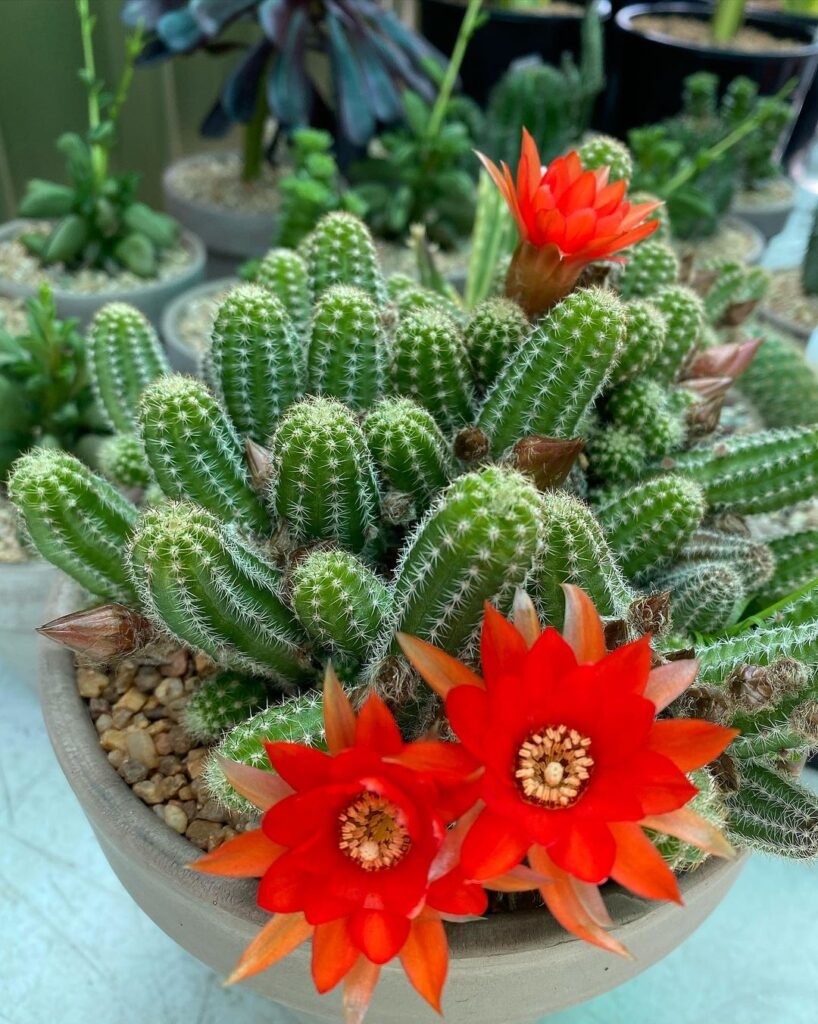
Botanical Name : Echinopsis chamaecereus
The peanut cactus is a small, globular cactus that gets its name from its distinctive peanut-like shape. These cacti are easy to care for and can produce vibrant yellow or orange flowers when they reach maturity.
31. Rebutia Cactus
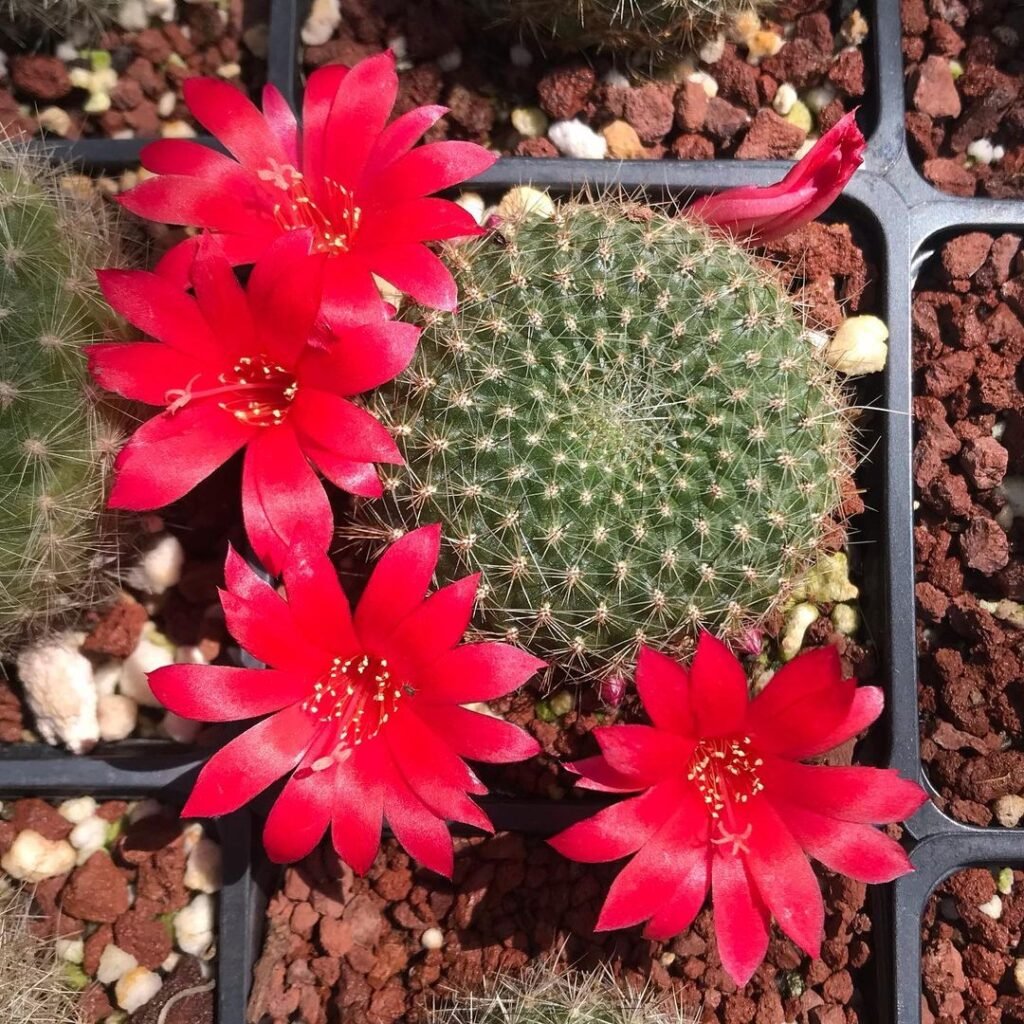
Botanical Name : Rebutia
The rebutia cactus is a small, globular variety that is native to South America. These cacti are relatively slow-growing and can produce a wide range of colorful flowers, including red, orange, yellow, and purple.
Caring for Your Cacti:
While cacti are renowned for their ability to thrive in harsh desert conditions, they still require some basic care to ensure their long-term health and vibrancy. Here are some essential tips for caring for your cactus collection:
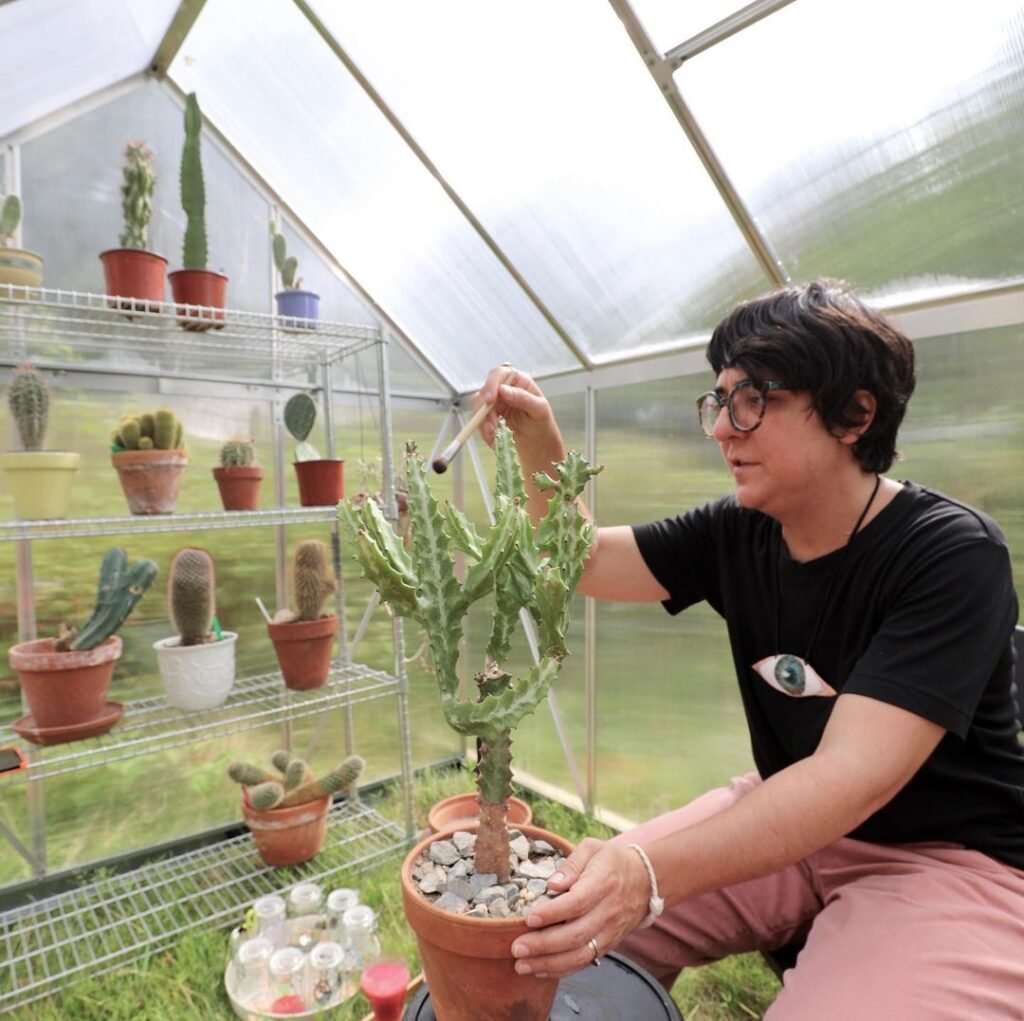
Sunlight: Most cacti require ample sunlight, ideally at least six hours of direct sunlight per day. If growing them indoors, place them near a sunny window or invest in grow lights.
Soil: Cacti prefer well-draining soil mixes specifically formulated for succulents and cacti. These mixes help prevent waterlogging and root rot.
Watering: One of the most common mistakes in cactus care is overwatering. Cacti should only be watered when the soil is completely dry, usually every two to four weeks, depending on the variety and growing conditions.
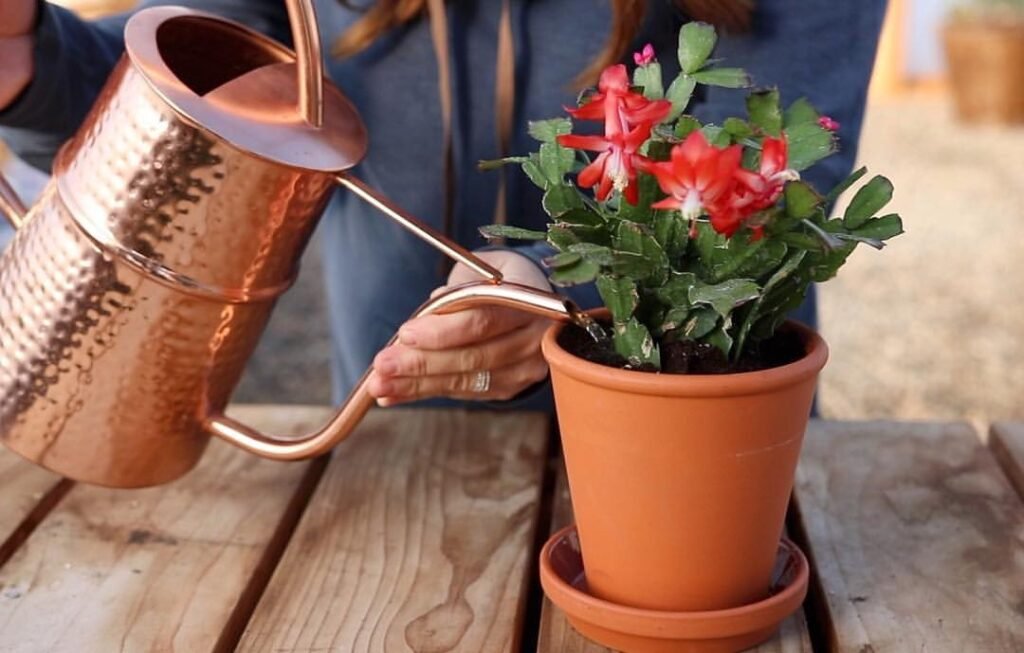
Fertilizer: Cacti have modest fertilizer needs. Use a balanced, water-soluble fertilizer diluted to half strength during the growing season (spring and summer).
Repotting: Cacti generally prefer to be pot-bound, so repotting should be done only when the plant has outgrown its current container or the soil has degraded significantly.
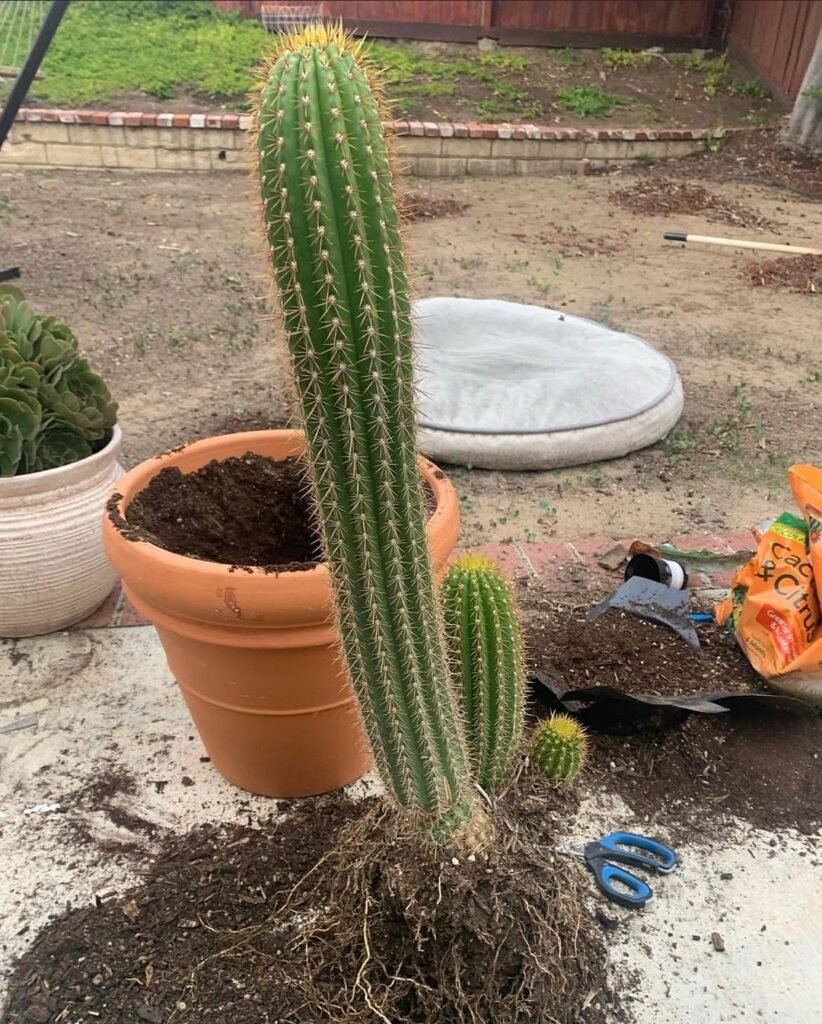
Pest Control: While cacti are generally resistant to pests, they can occasionally fall victim to mealybugs, spider mites, or scale insects. Regularly inspect your plants and treat any infestations promptly with appropriate organic or chemical methods.
With the right care and attention, your cactus collection will thrive and bring a touch of desert beauty to your living spaces. Embrace the unique charm of these low-maintenance wonders and let their striking forms and vibrant blooms brighten your days.
Decorating with Cacti:
Cacti are not only fascinating plants but also versatile decorative elements that can enhance the aesthetic appeal of your living spaces. Here are some creative ideas for incorporating cacti into your home decor:
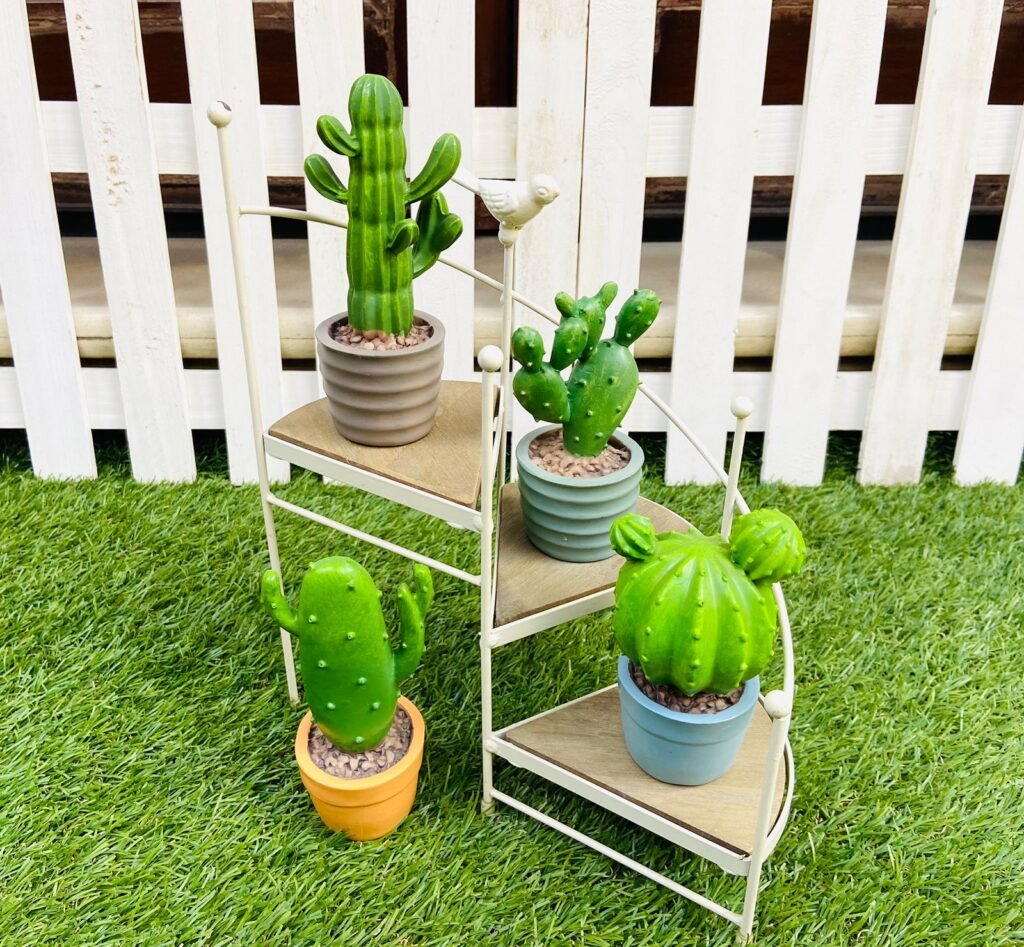
Cactus Gardens: Create a stunning cactus garden by combining various species and sizes in a large planter or raised bed. Mix and match different shapes, colors, and textures for a visually striking display.
Succulent Terrariums: Combine small cacti with other succulents to create captivating terrarium arrangements. These miniature desert landscapes can be displayed in glass containers or open planters.
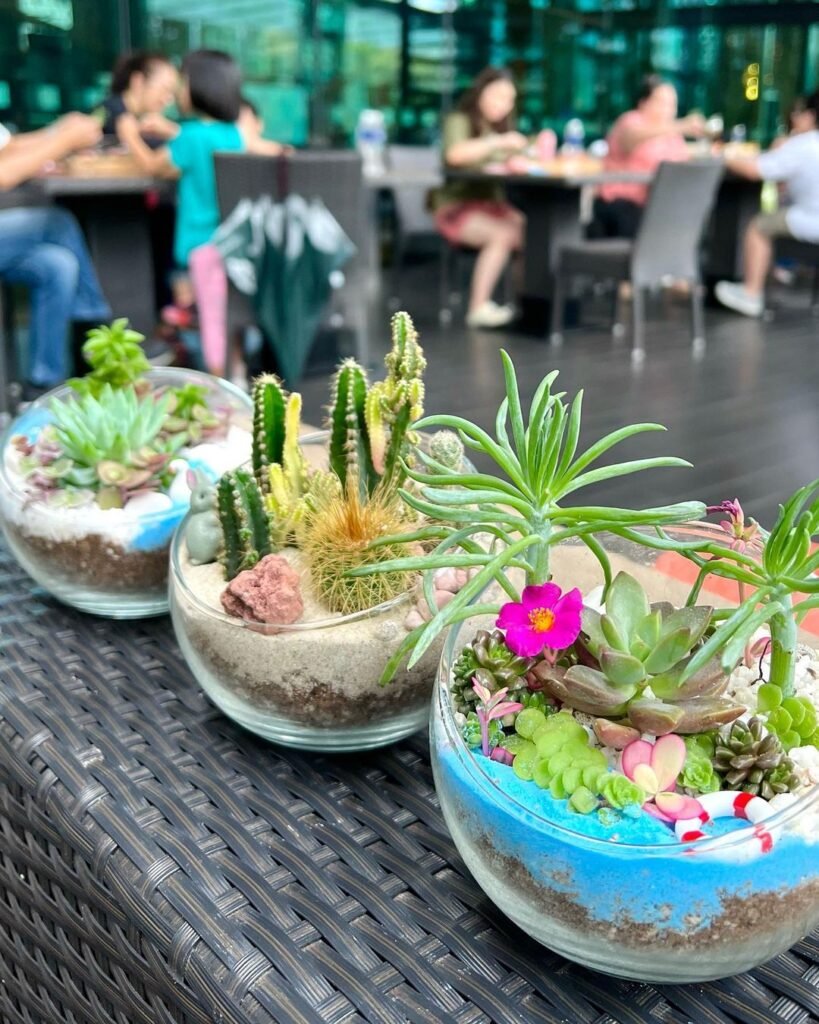
Wall-Mounted Displays: Showcase your cacti collection by mounting them on a vertical wall or creating a living wall feature. This not only saves floor space but also adds a unique and eye-catching focal point to any room.
Cactus Centerpieces: Arrange cacti of various sizes and shapes in a large planter or bowl to create a striking centerpiece for your dining table or coffee table.
Cactus Shelves: Dedicate a shelf or series of shelves to your cactus collection, allowing you to display and appreciate each specimen individually.
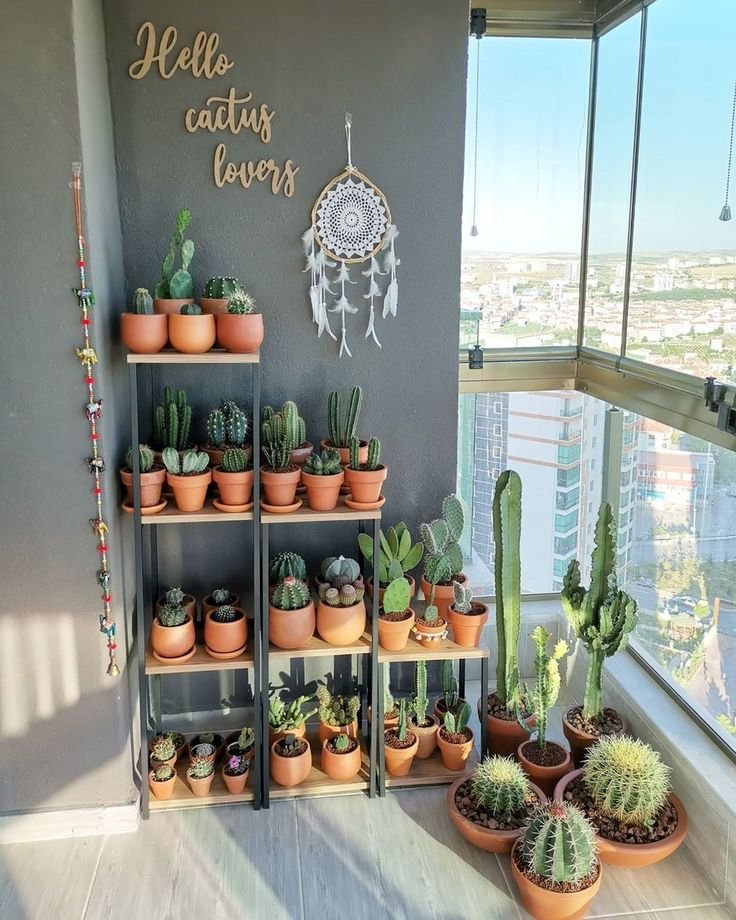
Cactus Bookends: Use larger cacti or cactus planters as unique and whimsical bookends for your shelves or desks.
Cactus-Themed Decor: Incorporate cactus-themed items like wall art, throw pillows, or ceramics into your living spaces to complement your cactus collection and create a cohesive desert-inspired theme.
Remember, when decorating with cacti, prioritize their care requirements and ensure they receive adequate sunlight, proper watering, and appropriate soil conditions. With a little creativity and attention to their needs, cacti can add a touch of natural beauty and desert charm to any room in your home.
Propagating Cacti:
One of the most rewarding aspects of growing cacti is the ability to propagate them and expand your collection. Cacti can be propagated through various methods, including offsets, seed germination, and stem cuttings. Here’s a brief overview of each propagation technique:
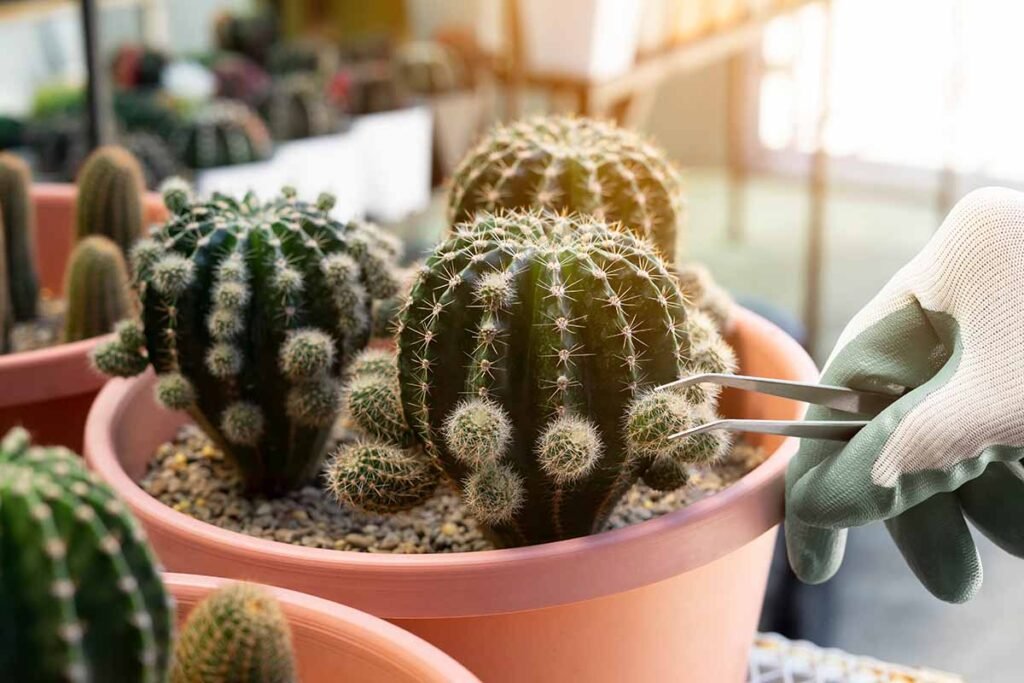
Offsets: Many cacti naturally produce offsets or “pups” at their base or along their stems. These offsets can be carefully removed and replanted to grow into new plants. This method is often the easiest and most reliable way to propagate cacti.
Seed Germination: Cacti can also be propagated from seeds. However, this method can be more challenging and time-consuming, as cactus seeds can be slow to germinate and require specific conditions. It’s essential to obtain fresh, viable seeds and follow proper sowing and germination techniques.
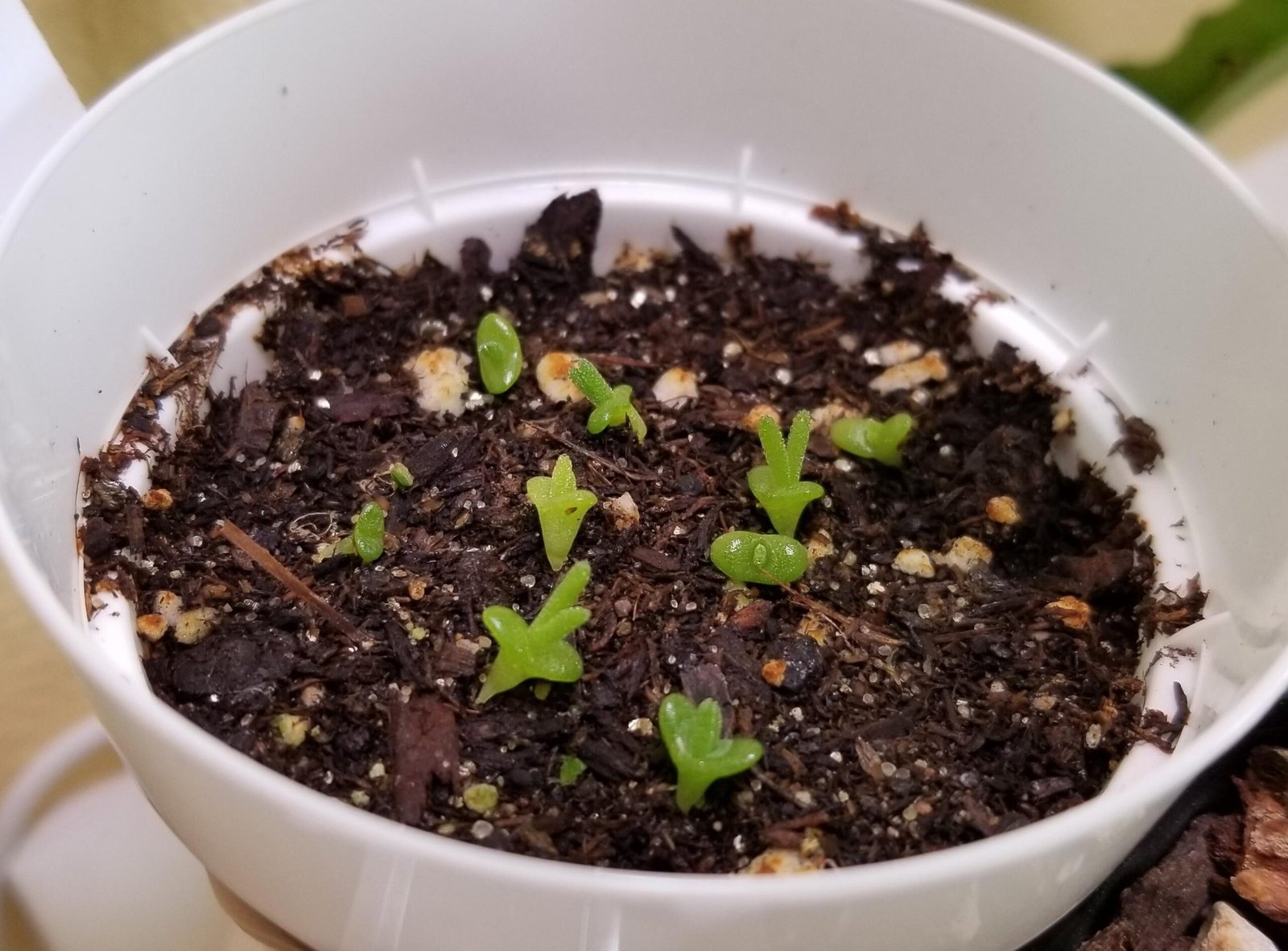
Stem Cuttings: Some cacti can be propagated through stem cuttings. This involves carefully removing a stem section from the parent plant and allowing it to callus over before planting it in a well-draining soil mix. This method works best for columnar or branching cacti varieties.
When propagating cacti, it’s crucial to use sterilized tools and containers to prevent the spread of diseases or pests. Additionally, proper labeling and record-keeping can help you keep track of your propagated plants and their origins.
Sharing and exchanging cacti with fellow enthusiasts is a great way to expand your collection and discover new varieties. Many local cactus societies or plant clubs organize events and swaps where members can trade plants, seeds, or cuttings.
With this comprehensive guide, readers can explore a diverse array of 31 popular cactus varieties suitable for growing at home. From classic barrel cacti and prickly pears to unique specimens like the fairy castle cactus and old man cactus, there’s something to pique the interest of every cactus enthusiast.
Reference Links-
- 25 Best Cactus Plants for Indoor and Outdoor (Balcony Garden Web)
- 16 Ways to Decorate with Cacti (HGTV)
- How to Propagate Cacti (Missouri Botanical Garden)
- Propagating Cacti from Seed, Cuttings, and Offsets (Cactus Art)
- How to Propagate Cacti: 3 Easy Methods (Almanac.com)
- 10 Creative Ways to Display Cacti and Succulents (The Spruce)
- 15 Stunning Ways to Decorate with Cacti (House Beautiful)
Pingback: 31 Stunning Cactus Varieties to Liven Up Your H...
Pingback: How To Make A Christmas Cactus Bloom, According To An Expert
Pingback: The Best Types of Garden Beans to Grow in the South -
Pingback: How to Grow Hollyhocks: An Essential Guide for Timeless Beauty
Pingback: “Vibrant Viburnum Shrubs: A Beginner’s Guide to Growing Successfully”
Pingback: Monkey Tail Cactus: A Fun, Easy-Care Succulent -
Pingback: The Adorable Bunny Ears Cactus: A Comprehensive Care Guide - Solano Garden
Pingback: Fishbone cactus : How to grow and care for this unique houseplant
Pingback: Boost Your Hanging Succulents : The Ultimate Fertilizing Guide
Pingback: How to Prune Tomato Plants - Gardener's School
Pingback: The 7 Best Vegetables For Container Gardening - Gardener's School